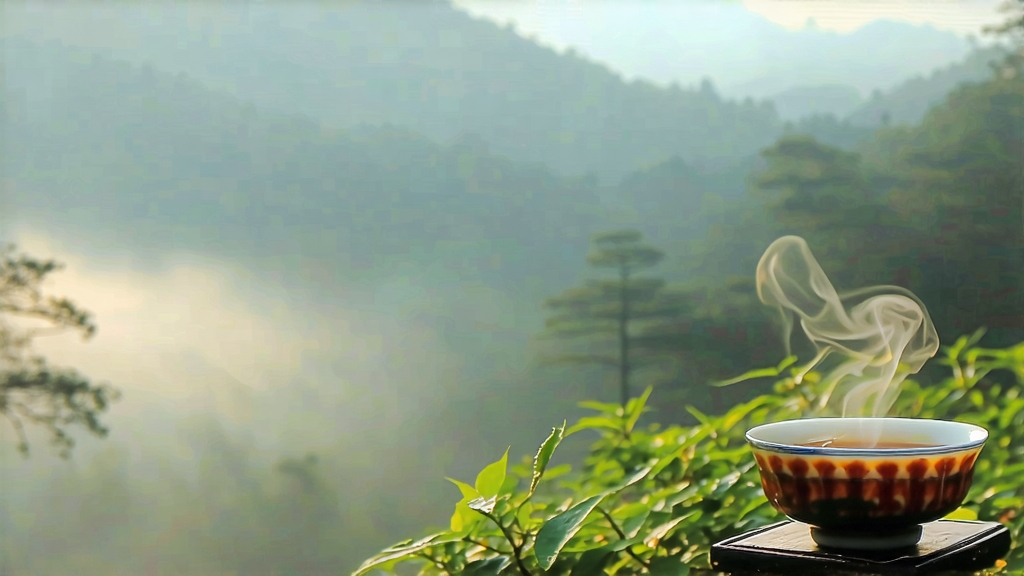
Alishan High-Mountain Oolong is not merely a tea; it is a liquid map of Taiwan’s central mountain range, a fragrant diary written in mist, altitude, and human patience. Rising between 1,000 and 1,400 metres above the Tropic of Cancer, the Alishan range catches the tail of the northeast monsoon and drapes itself in a perennial veil of clouds. That veil is the invisible co-author of every leaf, slowing photosynthesis, tightening cell structures, and coaxing the plant to stockpile amino acids and floral aromatics. The result is a tea that international tasters often describe as “orchid milk in a jade goblet,” a phrase that captures both its creamy viscosity and its elusive mountain bouquet.
Historical roots
Oolong cultivation in Alishan is relatively young compared with the centuries-old gardens of Fujian’s Wuyi or Anxi, yet its story is inseparable from Taiwan’s modern tea renaissance. In the late 19th century Qing officials invited Fujian craftsmen to teach semi-oxidised techniques to Taiwanese farmers, but large-scale movement into the high ridges only began under Japanese colonial rule (1895-1945). The Japanese, eager to break China’s tea monopoly, built mountain railways and research stations; they introduced the Qingxin (Green Heart) cultivar that still dominates Alishan today. After World War II, Kuomintang veterans—many themselves tea refugees from Fujian—pushed the planting frontier upward, lured by cool nights and the promise of spring water so pure it could be used without filtration. By the 1980s Alishan oolong had become the flagship of Taiwan’s “high-mountain” category, commanding prices that rivalled top Darjeeling lots at London auctions.
Cultivar & terroir
Although Qingxin (Camellia sinensis var. sinensis ‘Qingxin’) occupies ninety percent of acreage, small pockets of Jinxuan (milk oolong) and Cuiyu (jade oolong) survive as boutique experiments. Qingxin’s genius is its low-temperature vigour: at 13 °C dawn the bush continues to synthesise catechins slowly, preserving delicate geraniol and linalool precursors. Soils are acidic laterite rich in iron and aluminium, washed by daily fog that leaches nitrogen downward, forcing roots to dive deep for nutrients. The diurnal swing can exceed 15 °C, thickening leaf cuticles and concentrating soluble sugars. Taken together, these factors yield a leaf that is smaller, thicker, and more fragrant than its lowland cousin, yet less astringent because tannin polymerisation is retarded by nightly chill.
Plucking calendar
Alishan observes four seasonal harvests, but spring (late March to early May) and winter (mid-October to late November) are the most coveted. Spring tea carries the highest amino acid load and a pronounced lily note; winter tea is quieter, with cooler resin and iced-honey tones. Summer teas are rarely sold as single-origin; the heat accelerates oxidation, flattening aroma into generic “vegetal” categories. Farmers therefore practise “summer pruning,” cutting the bush back to waist height, allowing autumnal recovery and concentrating resources on the winter pick.
Crafting the cloud leaf
The making of Alishan oolong is a 24-hour choreography that begins at 3 a.m., when dew still beads the leaf. Pluckers select the standard “three-and-a-half” open leaf set—mature enough for complex chemistry yet tender enough to bruise. By 6 a.m. the baskets reach the factory, where they are solar-withered on large bamboo trays for 30–45 minutes, just long enough to reduce surface moisture without triggering premature oxidation. Indoor withering follows: leaves are laid on mesh racks in a climate-controlled room kept at 22 °C and 65 % RH. Every 15 minutes they are tossed by hand, a motion called “qing jiao” that gently damages cell walls, initiating enzymatic transformation. After three hours the leaf emits a faint pineapple fragrance; this is the cue for “yao qing,” the rocking-green step. Workers gather the leaves into cheese-cloth bundles and roll them shoulder-to-shoulder in circular bamboo drums, applying light pressure so edges bruise while midribs remain intact. Oxidation proceeds in slow motion: 25–30 %, far lighter than the 50–60 % of traditional Wuyi rock oolong. The goal is to keep the liquor jade-green with only a coral ring around the leaf margin.
Kill